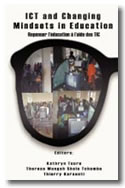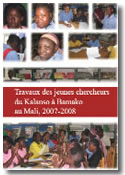Top black students go unnoticed June 29, 2013
By ROGER C. WILLIAMS JR.
Midwest Voices
Books and magazines tell tragic stories of black men incarcerated in such alarming numbers that some critics have challenged and speculated about the intent of America’s criminal justice system. The challenges are frequently accompanied by dismal statistics documenting low reading achievement usually leads to high drop-out rates and speculation that the deck of opportunity is stacked against black men. It’s especially difficult for those raised in single parent homes that battle the burdens of poverty.
Media coverage of the plight of black men — particularly young black men who are amassing high rates of black-on-black homicides — is certainly warranted. The potential quality of America’s leadership in the international community could be enhanced when a larger population of the brightest of these young men becomes available to make their contributions.
While there is not much written about academically successful low-income black students, they do exist. Their stories of success live with them as they survive in the shadows of urban America where the gangsters of misfortune, illiteracy and low aspirations rule.
I am grateful that many professionals have examined the problems that affect the unsatisfactory achievement of a number of black children, especially those that live in low-income households. The research studies reveal that black females are performing better academically in high school, attain higher rates of graduation from colleges and universities, and subsequently find employment at higher rates than black males.
Since there does appear to be attention paid to black children not achieving in school, I suggest that more attention be given to black students who are succeeding academically. Perhaps a study of the factors and conditions surrounding their success, followed by a concentrated effort to transform current ineffective practices may lead to an increase in the number of these students.
Last March, the PBS News Hour reported the results of a study that investigated the question: Why are some of the top achievers from poorer neighborhoods missing out on a shot to go to some of the best universities?
Viewers learned from Jeffrey Brown’s interview with Caroline Hoxby of Stanford University and Michele Minter of Princeton University that “elite schools” like Harvard and Yale aim to diversify their student bodies by ethnicity and income. Admissions officers reported that they did not find many low-income students in the pool of applicants.
However, the study found that there were more low-income students — including black female and male high achievers — than was originally thought by the 238 schools that participated in the study. The investigators discovered that in many cases low-income high achievers in urban schools belong to a small community of students who take college assessment exams late or they have not been advised of the generous scholarship aid that these schools have provided in the past to ensure diversity.
Social and inter-generational mobility for low-income high-achieving black students cannot occur until these students are brought out of isolation and given the attention they deserve. When this happens, America’s chances of increasing diversity in its talent pool should improve.
Roger C. Williams Jr., Ed.D., of Lee’s Summit, is a retired principal, counselor and instrumental music teacher. To reach him, send email to oped@kcstar.com or write to Midwest Voices, c/o Editorial Page, The Kansas City Star, 1729 Grand Blvd., Kansas City, MO 64108




Leave a Reply